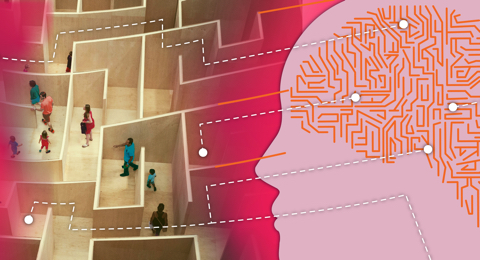Event
Recap
PLASTARC Webinar - From Psychological Safety to Inclusivity
Physiological Safety, Inclusivity, and Accepting Human Imperfection

On October 19th, PLASTARC hosted its latest webinar, “From Psychological Safety to Inclusivity: Designing a Socially Sustainable Workplace.”
As we remain knee-deep in a collective “stress epidemic,” the National Safety Council has found that every dollar organizations invest in mental and physical employee well-being brings an increase in productivity worth four dollars.
PLASTARC’s Amy Rosen added to this ongoing conversation by bringing together the thought-provoking work of Angela Spangler, Senior Director of Global Market Development at the international WELL Building Institute (WBI), Madeleine Drake, Director of People and Senior Sustainability Project Lead at EcoAmmo Sustainable Consulting, and Heli Shah, a designer for architecture firm, Cooper Carry. In their discussion, the panel offered a comprehensive exploration of the steps that leading organizations and designers are taking to foster a sense of psychological safety and inclusivity in the workplace.
During the hour-long conversation, the panelists focused on the following topics:
Bringing Your Whole Self to Work
Spangler defined psychological safety as the ability to bring your whole self to work, going on to explain that although one should be comfortable being themselves at work, discomfort shouldn’t be avoided at all costs – in fact, there are moments when a sense of discomfort can help foster a sense of inclusion, as learning often comes from putting oneself in difficult situations.
At EcoAmmo, a yearly health-and-wellness survey is distributed to employees in order to measure their sense of psychological safety. This was instituted after Google’s Project Aristotle identified psychological safety as the number one factor for creating and sustaining high-functioning teams.
Inclusivity and psychological safety are deeply intertwined, and both require a high level of intentionality, noted Shah, whose design work focuses on creating educational spaces that are equitable, diverse, and inclusive. Shah further emphasized how imperative it is for organizations and leaders to listen – “Creating a safe space to speak up is the first step to creating that equitable environment,” she said.
All members of a team will feel more comfortable sharing their ideas if there’s space left for ideas to “marinate” in conversation, stated Shah. Drake later seconded this point, suggesting team members wait 5-10 seconds to respond after an idea has been shared. Having opportunities to circle back and share thoughts after a meeting also fosters a sense of inclusion.
Sustainability Beyond Physical Structure
The WELL Building Institute has updated the WELL Building Standard to focus less on physical structure and more on organizational structure. Spangler explained that measuring for equity, health, and safety in the workplace has served to encourage organizations to provide more time off and mental health care.
Shah drew a direct contrast between the process of developing a socially sustainable workplace and more conventional design processes – “we apply design strategies to emotional and mental environments,” she remarked. This means:
• Having conversations not just about the physical needs that an organization’s workplace must meet, but the mental and emotional needs as well.
• Inviting employees to express their needs rather than relying on assumptions, as noted by Spangler.
• Being more cognizant of the direct relationship between hiring practices and team diversity, and taking steps to recruit outside of usual circles and incorporate new kinds of training (WELL).
Empowering Employees’ “No”
Drake said that employees should feel empowered to “say no, to honor [their] yes.”
If a task is critical and urgent, Drake added, she will ask, “What can I take off of your plate in order for you to help me with this task?” Spangler similarly suggested the implementation of “do not do lists,” through which employees can recognize that they do not have the capacity to touch a task for a while – typically until the end of the quarter – even though it may be important.
Employees are humans, with different specific needs and lives. Spangler added, “You can’t show up and give 100% to everything. You only have 100% and some of that should be going to things outside of work.” These considerations are critical when reflecting on policies and designs that promote employee well-being.
The conversation about promoting inclusivity and psychological safety through the emotional and physical design of workplaces is only just beginning. Join us on November 16th at 1pm EST for our next webinar, titled “Designing Workplaces for The Outliers: Prioritizing Marginalized Voices.”

